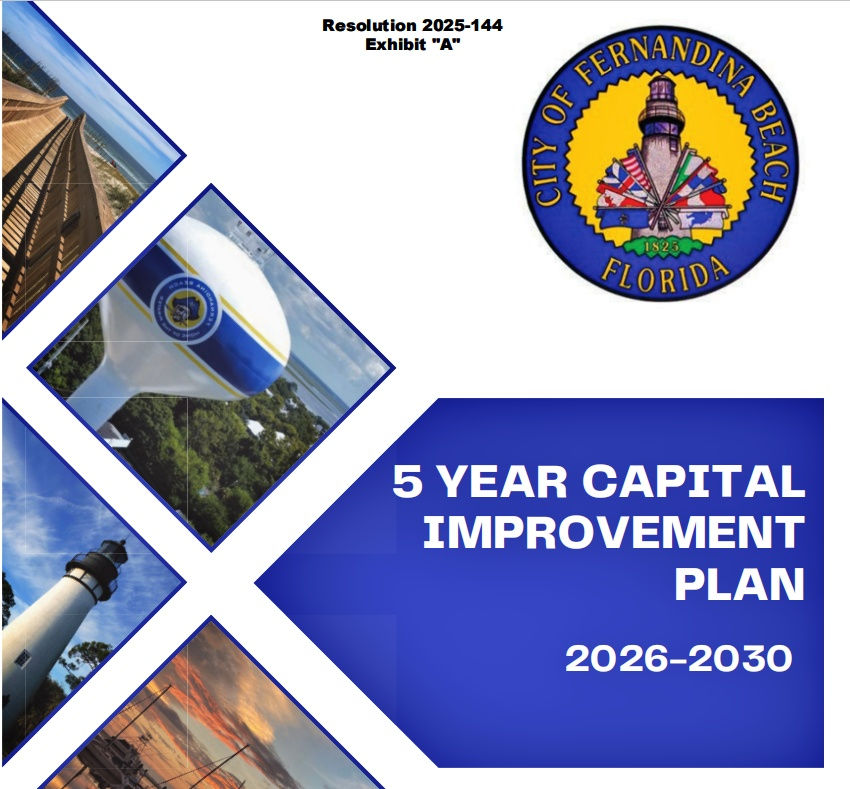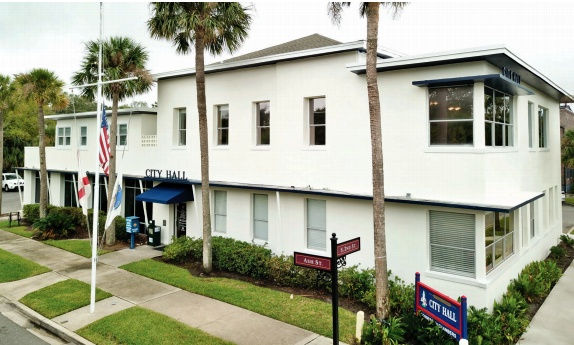City Charts $157 Million Capital Plan focused on Downtown, Waterfront, and Infrastructure
- Mike Lednovich
- Aug 24
- 3 min read

Fernandina Beach is laying out an ambitious vision for its future as city commissioners last Tuesday unanimously approved a five-year, $157 million Capital Improvement Plan (CIP).
The plan, covering fiscal years 2026 through 2030, detailed dozens of infrastructure projects across every corner of the city: downtown streetscapes, waterfront flood prevention walls, airport hangars, marina dredging, fire and police facilities, parks, and more.
“This is the most comprehensive capital plan that I think the city has ever had,” City Manager Sarah Campbell told commissioners. “It identifies every project we need to do for the next five years, with descriptions, photos, cost estimates, and funding sources. Only the first year is incorporated into the 2025-2026 annual budget, but this gives us a roadmap.”
Topping the list is a $22 million flood prevention wall along 1.1 miles of the city’s riverfront, a project aimed at stabilizing aging infrastructure and protecting the historic downtown from flooding and storm damage. One segment at Parking Lots C and D is already complete; $6 million in state grants are helping finance the next phases.
The downtown revitalization project, budgeted at more than $15 million, will update aged and outdated streets, sidewalks, lighting, and landscaping in the historic district. The last full renovation downtown occurred in 1978, with a partial update in the early 2000s. Officials say the project will ensure ADA compliance, pedestrian safety, and upgraded infrastructure to handle more than a million annual visitors.

The plan also includes $14.3 million for a new City Hall. The existing structure, built in 1904, has outlived its usefulness, city leaders said. “City staff has outgrown this facility and extensive repairs are needed which exceed the value of the structure,” the CIP document states.
Other major facility investments include:
Fire facilities: A $165,000 expansion of the training tower at Station 2 and a planned $60,000 remodel of Station 1.
Library improvements: $200,000 to replace the roof on the downtown branch, plus $193,000 for façade restoration.
Fernandina Beach’s municipal airport is a major focus, with projects totaling tens of millions. Highlights include:
Runway 13/31 rehabilitation ($6.2 million), including pavement, lighting, and stormwater improvements.
New hangars ($1.8 million for Phase 1, $1.5 million for Phase 2) to address a 90-person waiting list.
Taxiway extensions and rehabilitations, funded in part by FAA and FDOT grants.
For the marina, projects include:
$2.8 million for maintenance dredging of the basin.
$791,000 fuel tank replacement and possible relocation.
Replacement of dock pedestals and transformers to maintain service reliability.
Recreation projects are sprinkled throughout the plan, including:
$500,000 for beach park rehabilitation at Seaside Park.
$376,000 for masonry restoration at the Atlantic Recreation Center, plus $150,000 for kitchen and restroom renovations.
$100,000 for window replacements at the Atlantic Center, completing a three-phase upgrade.

The city’s golf course is also slated for improvements: irrigation and drainage renovations ($1.8 million), clubhouse renovations ($40,000), and a phased $285,000 bunker restoration program.
City Commissioners praised staff for assembling the document, which will now serve as the city’s capital roadmap.
Commissioner Genece Minshew lauded the work: “I would like to say that this capital improvement plan is a thing of beauty. I've been coming to these city commission meetings for almost 10 years, and this is the first time that I've seen something that really is actionable and is only going to get better as we continue to do things smarter and more efficiently.”
Minshew also highlighted the scale of the projects: “If you go into it and you look at the total pages over five years it's $157 million capital improvement plan that is a huge amount of money, and you say to yourself how can a town of 14 000 people have that much. It doesn't make any sense except for the reality is that things have been delayed, delayed, delayed... not recognized, not put forward in a manner that allows us to really debate it and understand it and make recommendations on it and make decisions.”
Commissioner Joyce Tuten pointed out that some projects are marked “dependent on financing,” but called the document “incredibly informative.”
The commission approved the plan unanimously, 5–0.
While the full five-year plan totals $157 million, only the first year’s projects are officially adopted into the budget. Each year, a new “fifth year” will be added as existing projects move up the schedule.
Campbell said this rolling approach ensures efficiency and transparency: “We think this is a more efficient way to approach capital improvements and to stay on top of it in a way that we can budget for appropriately going forward.”




Comments